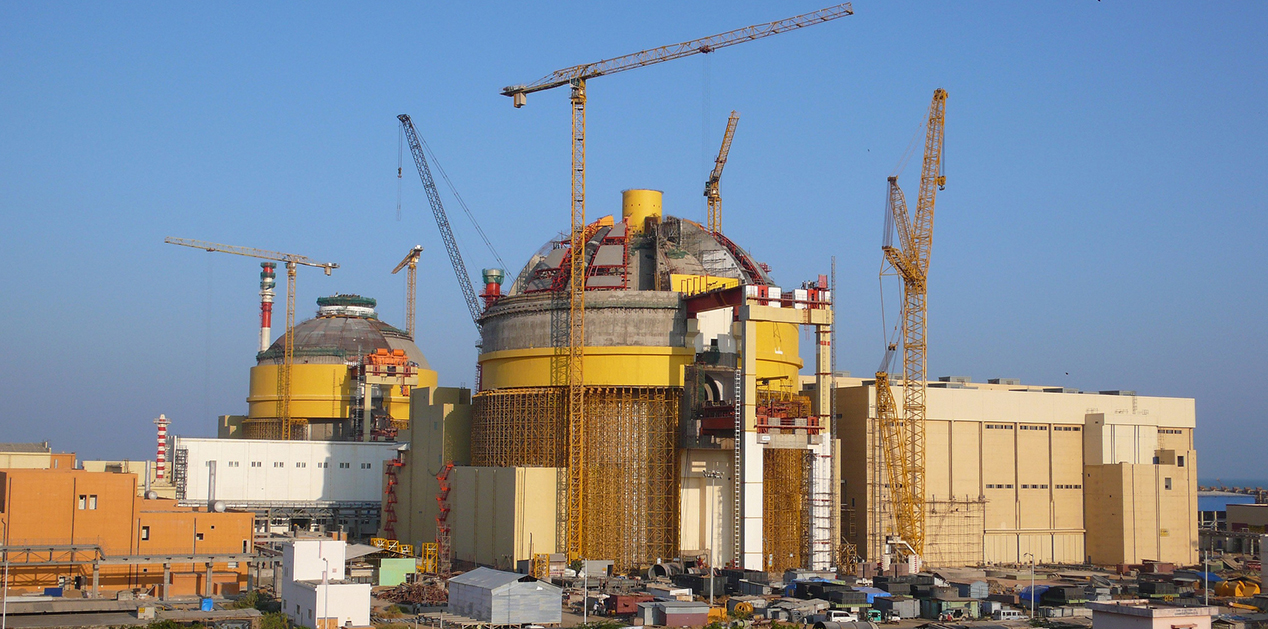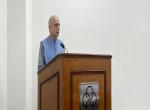Introduction
History will record 2015 as a banner year in ongoing discussions related to the U.S.-India civil nuclear commerce. President Barack Obama was a special guest of Prime Minister Modi on the Indian Republic Day last year. On the preceding day (25th January 2015), the two government leaders announced in New Delhi that the two countries had struck an accord on the two most contentious issues inhibiting progress on the civil nuclear deal, namely, the Indian nuclear liability law passed by the Indian Parliament in 2010 and the “Administrative Arrangements” associated with the U.S. India civil nuclear agreement signed by the two countries in 2008. The “breakthrough” achieved in New Delhi raised hopes that the two U.S. nuclear suppliers (Westinghouse and General Electric) would begin in earnest to engage with the Nuclear Power Corporation of India (NPCIL) on the sale of Generation 3+ state-of-the-art light water reactors (LWR’s) to India.
But the immediate reaction from U.S. suppliers was at best rather guarded, and at worst somewhat muted. General Electric showed little or no interest in the new development, and Westinghouse made a few statements that appeared positive. Westinghouse was already under contract with NPCIL for a “Pre-Early Works” contract signed in 2013 with work scope (related to site licensing) to be completed by the end of 2015, but there appeared to be no real enthusiasm on their part to initiate serious discussions on a reactor construction project.
If the first half of 2015 was the period when institutional barriers inhibiting civil nuclear commerce came down, the second half of the year provided the political momentum that led Westinghouse to take up commercial discussions in earnest. In fact, the paradigm shifted in the Fall of 2015, when the First India-U.S. Strategic and Commercial Dialogue was held in Washington on September 22, followed a few days later (September 24) by a presentation by this author at the School of Advanced International Studies (SAIS), a leading Think Tank in Washington, where I provided a roadmap for successfully negotiating a nuclear deal between Westinghouse and NPCIL1, and finally the Modi-Obama Summit that took place in New York on September 28.
As a result of these high level contacts, the next meeting of the Contact Group, set up by the two Governments following Prime Minister Modi’s visit to the U.S. in September 2014 to fast-track resolution of civil nuclear issues, turned out to be a momentous occasion in getting the two negotiating parties (U.S. suppliers and NPCIL) to redouble their efforts in reaching a closure on the sale of U.S. reactors to India.
Setting a Target Date for an Agreement
The Contact Group, involving diplomats and technocrats from the two countries, met in Washington on November 24, 2015. The official delegations on both sides were supplemented by industry representatives in some of the discussions. While there were no press statements issued following the meeting, one of the purposes of the meeting was to impress on the two commercial parties (U.S. nuclear suppliers and the Indian nuclear utility) that they needed to redouble their efforts in striking a deal and not let the goodwill created following the breakthrough agreement reached on 24th January 2015 be squandered. It was suggested that the two commercial parties should conclude their agreements in time to make the new reactor project “shovel ready” by September 2016. Westinghouse immediately took up the challenge, aligning its expectations with the next visit of Prime Minister Modi to Washington on March 31, 2016, and hoping that such a visit would provide the necessary diplomatic and technical momentum to both parties in reaching a timely successful closure on the contract.
Westinghouse subsequently dispatched a technical and contract negotiating team to Mumbai to work with its Indian partner, Larsen & Toubro (L&T), to develop a detailed proposal for submission to NPCIL by the end of February 2016. India also acquiesced to the Westinghouse request to include 6 (instead of 2) reactors in the offer giving Westinghouse an opportunity to build a pricing model that would benefit from economies of scale.
These expectations were made public during a visit of the U.S. nuclear industry delegation to India in the second week of December 2015. Various statements by the U.S. Ambassador to India, CEO of Westinghouse, and the Indian Ministry of External Affairs (MEA) to the visiting U.S. industry delegation strengthened the feeling that a major announcement regarding a nuclear reactor supply agreement by Westinghouse and NPCIL will be made either on the sidelines of the 2016 Nuclear Security Summit, hosted by President Obama in Washington which Prime Minister Modi planned to attend, or around that time.
So, What Happened?
The Nuclear Security Summit was held as scheduled from March 31-April 1, 2016 in Washington. Prime Minister Modi attended the meeting. However, no reactor supply agreement was signed by Westinghouse and NPCIL during his visit, even though Westinghouse did fulfil its pledge to deliver a proposal to NPCIL by the end of February 2016. In fact, a few days before of the summit it became clear that no one from NPCIL and only a select few from the Indian Department of Energy (DAE), including its head, would be present in Washington. What that meant was there were too many “gaps or missing pieces” in the Westinghouse proposal that could not be filled in time by the March 31 deadline.
Subsequent to the Nuclear Security Summit, Mr. Danny Roderick, CEO of Westinghouse, made a public statement that he expected the nuclear deal between his company and NPCIL to be completed by June 2016, coinciding with Prime Minister Modi’s official visit to Washington on June 7 and 8. That would be a proper occasion to highlight such an accomplishment and gives the two sides more time to fill in the blanks. One has to wonder, however, if the June agreement between Westinghouse and NPCIL will be detailed enough to lend confidence to the September completion date for signing a contract that qualifies the construction project as “shovel ready” by the end of 2016.
Examining the Deal
A nuclear deal in general is very complex. That complexity increases by an order of magnitude in India. There are numerous institutional and project related pieces that must fit together like a giant jigsaw puzzle. The institutional elements include site clearances and approvals from the State and Central agencies, site acquisition by NPCIL, reactor design, construction and operation certification through a multi-tier regulatory process, etc. Project related elements include detailed work breakdown structure, division of responsibilities, contract terms and conditions, determination of overnight project cost, project delivery cost incorporating financing and other related elements like the NPCIL business model leading to the techno-commercial offer (TCO). If Russian VVER reactors at Kudankulam or French EPR reactors at Jaitapur are taken as representative of the negotiating situation in India, then it would appear that such contract negotiations usually take at least 3 years, and possibly longer, to complete.
So can Westinghouse conclude its negotiations with NPCIL within a year? On the optimistic side, one can say that anything is possible especially given that the Westinghouse-L&T offer will be a turn-key project. Mr. Roderick likes to say publicly that he has been negotiating with India for a decade but what he does not say is that prior to joining Westinghouse in September 2012, he worked for a competitor that is marketing an unbuilt reactor design. It is true, however, that Westinghouse and NPCIL have been frequently meeting and discussing AP-1000 reactor sale to India ever since 2009 when India announced specific sites for American reactor suppliers on a sole-source basis, and Westinghouse was allotted Mithi Virdi site in Gujarat. There was some speculation in the Press at that time that a U.S. supplier had provided its first “back of the envelope” cost and tariff numbers to NPCIL which were nearly twice the target figures expected by NPCIL and DAE. Then in 2010 the Indian Parliament passed the Civil Liability for Nuclear Damage Act (CLNDA), and the entire focus of the U.S. establishment, including politicians, policy makers, and the U.S. nuclear suppliers, shifted to highlight deficiencies in the Indian liability law and everyone virtually refused to proceed any further until changes were made to the CLNDA.
The result was that between 2010 and 2015 very little was accomplished in terms of holding meaningful discussions on supply of American reactors to India. The only exception was that NPCIL, as a gesture of goodwill, agreed to provide a $10 million contract to Westinghouse for “Pre-Early Work” related to site licensing in 2013.
There were two parallel developments taking place involving Westinghouse in this uncertain period. One was that Westinghouse was pursuing a new reactor opportunity in Czech Republic, where the utility CEZ was planning to build two new reactors at Temelin. The selection process had whittled down to two reactor suppliers. Westinghouse and Rosatom were slugging it out in the final phase of the procurement with active backing and support of their respective governments. Westinghouse, to make their commercial offer attractive, signed multiple agreements with local Czech suppliers to promote localization, cost-effectiveness, and greater public acceptance of their offer. In fact a senior DAE official at that time commented to me privately as to how Westinghouse had put so much marketing and political resources in Czech Republic where their chances of winning a contract were only 50%, whereas in India the company had already been given a de facto sole-source award and yet their marketing and public relation efforts were close to nil.
Eventually, however, CEZ cancelled the procurement in 2014, indicating that both vendor offers were in an unacceptable price range, even after both Westinghouse and Rosatom were made to resubmit their amended offers a couple of times prior to the cancellation. Once the Temelin opportunity fell through for Westinghouse, only the ongoing reactor projects in China, and new reactor sales opportunities in India and U.K. loomed firmly over the horizon.
At the same time, unknown to general public and global financial markets, Westinghouse owner Toshiba was undergoing a severe financial crunch which would be eventually exposed in 2015, and appeared to be tied closely with their Westinghouse acquisition. Toshiba acquired Westinghouse in 2006 at a steep price ($5.4 billion), and later it was determined that Westinghouse’s AP-1000 project in China was faring badly. Toshiba hid about $1.3 billion in losses from the write-offs that were taken by Westinghouse in 2012 ($926 million) and in 2013 ($400 million), in effect inflating net profits by $1.3 billion to cover these write-offs. (It should be noted, however, that apart from these losses Westinghouse has generally been profitable when averaged over an 8 year period from 2007.) Subsequently, the entire leadership of Toshiba was removed and new executives were put in place to restore market and public confidence in the company. Toshiba also changed the Westinghouse management in 2012 when Danny Roderick was hired as the new CEO. One has to conclude that Toshiba went through a period of great uncertainty and anxiety from 2007 through 2015 when finally its financial losses were made public. That may also explain why Toshiba/Westinghouse took a slow and cautious approach to the Indian opportunity even after India earmarked the Gujarat site for the company reactors in 2009. It is interesting to note that these days any favorable news related to progress made by Westinghouse in securing a new purchase order from India usually adds a few points to Toshiba’s stock price. It is obvious that the financial market would welcome Toshiba’s sale of Westinghouse AP-1000 reactors in India with great enthusiasm.
Closing the Deal
Can the deal be closed in time, meaning before President Obama steps down in January 2017? Theoretically, anything is possible. Practically, I doubt if a “shovel ready” contract can be signed in the short period between now and January 2017. Even if all institutional and project formalities are completed, I see following four areas as “hot button” issues that may not be resolved in time to meet the January 2017 deadline.
- The Turn-Key Contract: While it was Westinghouse that initially insisted on such an approach, they also were astounded how quickly NPCIL agreed to their suggestion. NPCIL probably did so out of experiences distilled from constructing Kudankulam -1&2 reactors where NPCIL took up the responsibility for construction management. That experience challenged NPCIL capacities given that it had previously managed much smaller Generation-2 pressurized heavy water reactor (PHWR) projects, and building a much larger Generation-3 Russian LWR reactor stretched their technical expertise and resources. AP-1000 is an even larger Generation-3+ LWR design, and NPCIL is probably prudent in assigning the full design and construction responsibility to the Westinghouse-L&T team, but the downside of such an arrangement is that NPCIL will not be able to examine prices of thousands of subcomponents in these reactors and be able to pursue detailed value engineering, localization and other cost optimization efforts that have made Indian indigenous reactors to be most cost effective reactors in the world.
The bottom line is that if the reactor supplier can make the TCO that meets NPCIL financial requirements and tariff goals, it is a done deal. But negotiating those targets in a short-time will be hard if not impossible.
Reports indicate that if foreign reactors cost no more than Rs. 20 crores per MW, NPCIL will be able to achieve its tariff targets on electricity generated without changing its business model. Such a price was achieved in negotiating Kudankulam 3 & 4 reactors with Rosatom. But a market review would indicate that Russian pricing for Indian reactors is considerably below the price it is offering to others, meaning that India received a special deal for whatever reasons. Indeed, my analysis indicates that the most competitive price is offered by Chinese, and their newest Generation 3+ reactor with a design life of 60 years (HPR-1000) is optimistically priced around Rs. 23 crores per MW to Rs. 26 crores per MW. I use the word optimistic because no “Hualong One” reactor has been fully constructed as yet and the actual true cost may end up higher. (In comparison, the two new AP-1000 reactors presently under construction at the Vogtle nuclear power station in the U.S. State of Georgia are expected to cost over Rs. 1 lakh crores.) So Westinghouse and NPCIL will need to work hard to close the gap between what is expected and what is achievable in cost figures. NPCIL will need to reassess conservatism in its business model to share risks with suppliers on a comparable basis. By the same token, any foreign supplier counting on bringing political pressure on DAE/NPCIL to force a closure in its favor will learn the hard way that such an approach has not worked in the past and will not likely work in the future either.
- Financing: Financing is critical in determining the final project cost. It is obvious that India would like to avail itself of Government Assisted Foreign Buyer Financing offered by the Export-Import Bank of the United States (EXIM). Furthermore, there is a strong reason to believe that Toshiba can access financing through the Japan Bank for International Cooperation (JBIC), though JBIC in most cases coordinates its decisions with the EXIM.
EXIM, however, is currently in a limbo. The U.S. Congress allowed the charter of the agency to expire at one stage, and even though it has been lately revived, it is unable to make any decisions on financing new projects above $10 million because the agency lacks the number of requisite Board members to function properly. The Obama Administration is working hard to add a third Board member to make up the quorum, but so far the U.S. Congress has been uncooperative. So no billion dollar loans can be approved by EXIM at this time or possibly in the next few months.
EXIM financing requires the buyer to pay 15% of the total U.S. supplier cost in cash as a down payment before the Bank will finance the remaining 85% at favorable rates. In the end, it may be that while NPCIL has concluded a 6-reactor deal with Westinghouse, but in practical terms the actual construction project in the first phase will likely consist of only 1 or 2 reactors depending upon how much NPCIL can offer from its reserves, secure from the Indian Treasury, or raise from the market to cover the 15% down payment. If the economies of scale are to be trusted, then the first 1 or 2 reactors will cost considerably higher than the last one, meaning someone (Indian tax payers?) will have to pick up the additional cost of the first movers.
The issue of nuclear liability is closely tied to risk and hence to financing. India has repeatedly slipped on the promised date by which the nuclear liability policy will be made available, first to the operator (NPCIL), and subsequently to suppliers beginning with domestic companies. The latest information from the General Insurance Corporation of India (GIC Re), which manages the India Nuclear Insurance Pool (INIP), is that NPCIL will be issued a policy in the next 2 to 3 weeks. It is unclear when the policy will extend to foreign suppliers.
- Site Acquisition: NPCIL has not yet acquired the Mithi Virdi site in Gujarat. Land acquisition for industrialization is a very emotive issue in India, and the acquisition of industrial land is both tedious and slow. Even if land were to be transferred to NPCIL by the State of Gujarat, there is no doubt that it will trigger immediate legal challenges from the civil society ranging from farmers to anti-nuclear activists that will ensure a lengthy litigation period before any construction can begin.
- India-Japan Civil Nuclear Agreement: The India-Japan agreement has been in the works ever since the U.S.-India civil nuclear agreement came into force in 2008. Simply put, the Japanese, especially lawmakers, have reservations. India has done everything possible to address Japanese concerns, and the U.S. has also expressed support for such a deal. However, it was only after Toshiba began to exercise its political influence in Tokyo that things began to change. Recently, Japan’s Prime Minister Abe gave his consent to the deal, but the agreement has to be voted on and approved by the Japanese Diet before it can be formally signed. That may happen in the first half of this year, but delays are possible.
The India-Japan agreement is important to securing the final closure on the Westinghouse-NPCIL financial deal, not only because Westinghouse’s parent is a Japanese company, but also because the Indian AP-1000 project will require many components to be fabricated in Japan.
In conclusion, I am glad to report that Westinghouse and NPCIL are making good progress in reaching a final closure on the sale of AP-1000 reactors to India. The agreement to be signed in June 2016 is an attestation to that fact. However, there are still some major hurdles to overcome before the final “shovel ready” contract can be signed by the two parties. So while that final outcome cannot be realized within a few months, I do believe that sooner or later such a goal will be achieved. The civil nuclear deal has been, and continues to be, a key aspect of the Indo-U.S. strategic partnership.
Endnotes
The author is with International Atomic Energy Consulting, Washington, DC
Published Date: 24th April 2016, Image Source: http://www.en.wikipedia.org
(Disclaimer: The views and opinions expressed in this article are those of the author and do not necessarily reflect the official policy or position of the Vivekananda International Foundation)










Post new comment